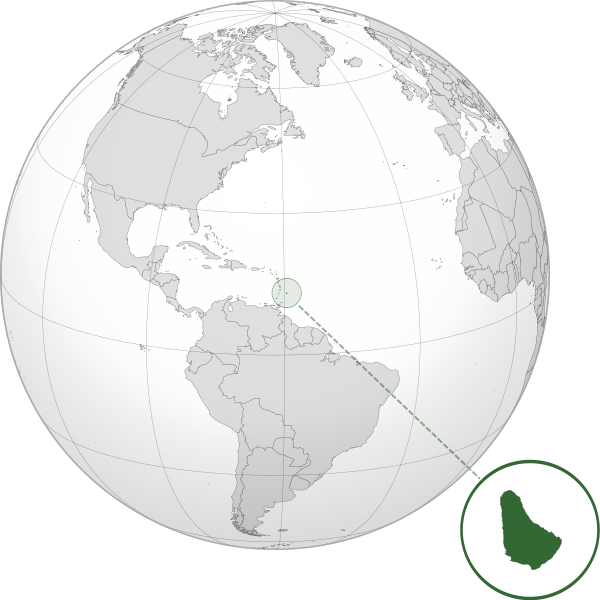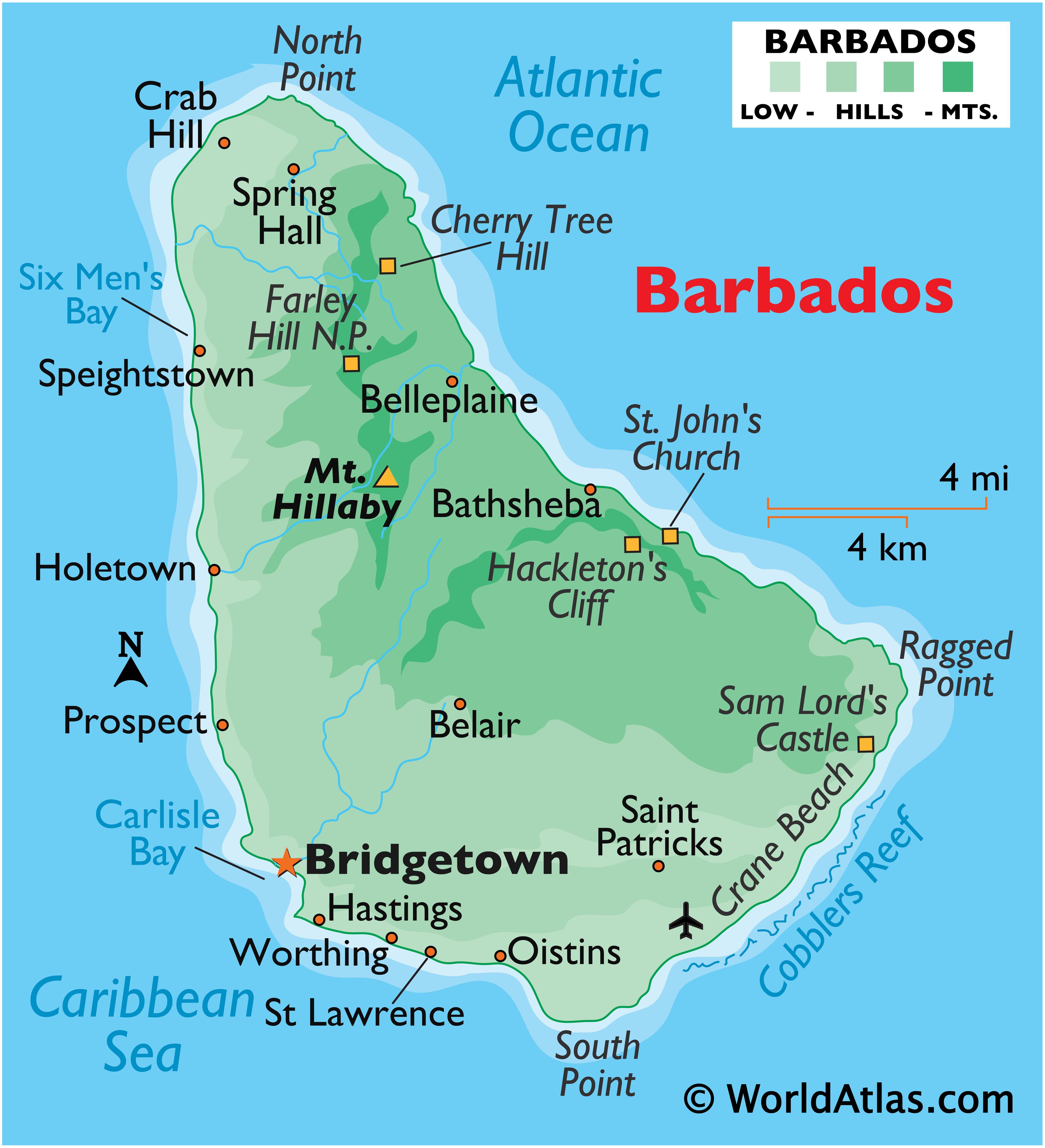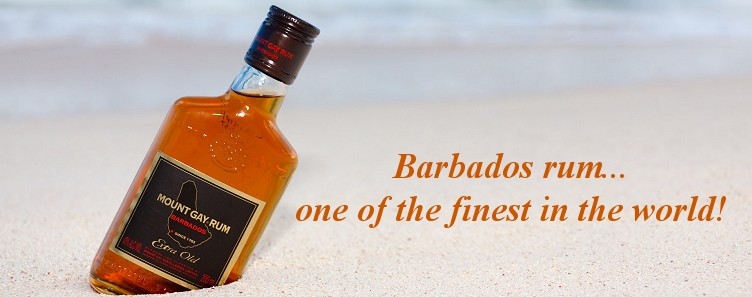No one knows which
European nation first claimed the island of Barbados, though the name of the
island is probably either Portuguese (Barbados)
or Spanish (los Barbados) both
meaning “bearded.” This may refer to the hanging, bearlike roots of the native
fig-trees, or to way the sea-foam sprays out over the island’s surrounding
reefs. Stories of bearded natives are also told, but there is no evidence of
any such people.

The original inhabitants,
members of the Arawak tribe, called it Ichirouganaim,
meaning “red land with white teeth.” The island, the easternmost in the
string of Caribbean islands called the Lesser Antilles, is one of the earliest
to be colonized by Europeans, and most of the indigenous people left the island
early on. By 1519, it was named and show in its correct position on European
maps.
Another name for this
island is Bim or Bimshire. This name is probably derived from the Igbo term meaning “The
place where my people (kin) are.” This would be because of the relatively large
number of enslaved Igbo people (from what is now south-eastern Nigeria) who
were brought to the island.

The island of Barbados is
so far east it is actually a part of the Atlantic, but is described as a Caribbean
island, mostly because of its place at the end of the Lesser Antilles chain,
and also because of it cultural identity as Caribbean. First the Amerindians,
and later European colonists treated it as Caribbean.
The English took control
of Barbados in 1627. Unlike the Spanish, who were only interested in gold and
silver at the time, the English were looking for places to grow tropical crops.
Tobacco, cotton, indigo and ginger were all raised on the island.

But the island’s history
includes a darker note. In its early years, hundreds of thousands of European
poor, criminals (sometimes guilty of extremely minor offenses), Prisoners of
War and religious minorities were sold into slavery on the island.
During the English Civil
War, Ireland, which had been conquered by England, rebelled, trying to regain
its freedom. The rebellion of 1641 was put down. When Oliver Cromwell, general
of the Civil War’s winning side, took control of Ireland, he decided on an
effort to eradicate the Irish people entirely. To this end, he encouraged
transportation of the Irish to slave-labor camps in Barbados.
Estimates of the number
of Irish transported range from 50,000 to over 500,000, but records are scarce,
since during this time the Irish also faced famine, bubonic plague and cholera.
An estimated 1/3 of the population either died or was transported.
Today Barbados is one of
the most popular vacation destinations in the world, and it may be difficult to
understand why transportation there from Ireland was such a harsh blow. Certainly
it would be an emotionally stress to be cut off from one’s homeland, family,
religion and language. But the difference in climate between the two islands is
remarkable.

In Ireland today, the temperature
rarely goes above 70 degrees Fahrenheit, and frequently sits at 85 degrees. Ireland in the 1600’s was just
emerging from a “little ice age.” In contrast, the temperature in Barbados
rarely dips below 70 degrees. Imagine
the hottest temperature you’ve ever experienced, and now imagine that this is
the coolest you’ll ever be again. Not a pleasant idea.
Many Europeans died in
the harsh climate of the Caribbean, Eventually, slaves from Africa began to be
imported. These people were better able to deal with the tropical climate, and
as farming moved toward sugar production, African slaves became a near-necessity.
Sugar production also brought about a business in the production of rum.

Barbados rum is still a
valuable commodity, but during the Golden Age of Piracy, it was of such consistent
high quality and value that it became a standard form of commerce, used
alongside gold and silver as currency.
Barbados, like many other
islands, faced several slave revolts, the largest of which was named “Bussa’s
Rebellion” In 1816 a free African named Bussa, who had been kidnapped and sold
to the English in Barbados, gathered a group of some 400 freedom fighters, both
men and women. They attacked a plantation, and Bussa was killed in the action.
His followers fought on until they were overwhelmed by the guns of the colonial
militia.

While the rebellion was
not successful it was part of a series of rebellions and uprisings which caused
the British to reconsider the practice of slavery. When slavery was abolished in
1833, 83,000 people were released. Today the population of the island is over
90% of African descent, though a strong vein of Irish can also be seen in the faces of the people, and heard in its accent. A statue of Bussa stands in the island’s capital of
Bridgetown.
Today Barbados has a
thriving economy, a population that is nearly 100% literate, and a healthy
concern for the protection of its natural beauty. In addition to its other
attractions, it is considered to be the only Caribbean island not in the hurricane
strike zone. While Irish rebels used to say that they were going to either “Hell
or Barbados” when they headed out to battle for their own country’s freedom,
Barbados is today a pleasant place to vacation.
Unwind, recharge and have fun at The Barbados London Elite Sunshine Music Festival. Don’t miss the chance and be the part of this awesome event, book your ticket @ https://goo.gl/SJfF8g OR Whatsapp +447908676708.
ReplyDeleteHello. Great read but a correction is needed.The Bussa statue is not in the capital, it is in the Haggatt Hall area of the parish of St Michael.
ReplyDeleteI also agree that this was great and I loved how much you got right about our beautiful island however the location of the Bussa statue needs to be changed here.
DeleteOther than that I loved it.